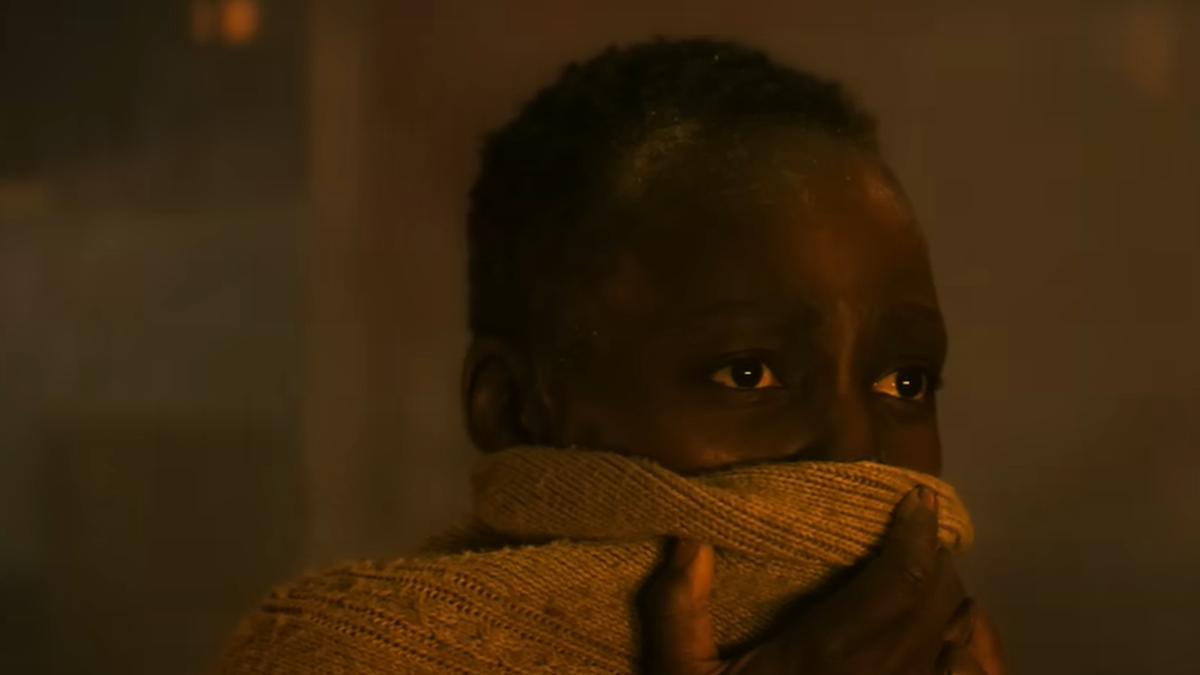
One of the most surprising aspects of “A Quiet Place: Day One” is the involvement of Michael Bay as one of the producers. Known for his high-octane films filled with explosions and noise, it is almost hard to wrap one’s mind around the concept of Bay being behind a film that centers on silence as the key to survival. This third installment in the ‘A Quiet Place’ franchise follows the immensely successful “A Quiet Place” (2018) and its sequel “A Quiet Place Part II” (2020), both directed by John Krasinski. In “A Quiet Place: Day One,” the narrative shifts to focus on Sam, a terminally ill poet portrayed by Lupita Nyong’o, and Eric, a British law student played by Joseph Quinn, as they embark on a perilous journey from Manhattan to Harlem, driven by an unusual quest for pizza.
Faced with the imminent danger of blind extraterrestrial creatures equipped with a highly acute sense of hearing, the quest for pizza might seem absurd. However, it’s a mission that embodies much more than a mere desire for food—it is a yearning for normalcy and a poignant reminder of happier days. Eric’s intent to bring some semblance of joy to Sam by recapturing a cherished memory linked to her jazz pianist father, who once took her for pizza after performances, adds depth to their seemingly quixotic endeavor.
A point of contention for viewers might be the film’s use of Screen X, which expands the viewing experience by adding screens to the sides. This additional visual expanse could either enrich the cinematic journey or prove to be a distraction, as the consensus remains divided. Ideally, a more seamless integration of the extended screens would have been preferred, curving them around the sight line instead of setting them at right angles. Despite these potential distractions, the audience eventually adjusts, allowing for an immersive cinematic experience.
Interestingly, the film exhibits a notable restraint in showing apocalyptic destruction, most of which occurs off-screen. The alien antagonists resemble xenomorphs, a design choice that undoubtedly heightens the tension. These creatures skitter about, shattering glass and plunging from high places onto the luckless survivors below, cultivating an atmosphere of perpetual dread.
.
One of the film’s standout scenes occurs when Sam discovers herself amidst other survivors, including Henri, reprised by Djimon Hounsou from “A Quiet Place Part II,” in a partially decimated church. The dichotomy of the ruby red and shimmering blue stained glass windows amidst ruin evokes a stark beauty that is both haunting and hopeful. This visual metaphor reinforces the film’s underlying message — that even in the darkest times, beauty can be found, and the human spirit endures.
Adding to the film’s unique aesthetic is a delicate marionette show orchestrated by Sam’s nurse, Reuben, played by Alex Wolff. This segment is imbued with ethereal beauty, offering a moment of respite and grace amid the constant threat of danger. Nyong’o’s performance roots the entire narrative, evoking emotion and belief in the characters’ determination to find solace in something as ordinary yet nostalgically significant as a pizza.
The ensemble cast adds layers to the story, and even a feline character catalyzes some intrigue. Sam’s service cat, Frodo, delivers an unexpectedly captivating performance, almost mocking the chaos as the humans scramble for safety. Another evocative setting is an abandoned bookstore—representing an ideal refuge for anyone who has ever dreamt of endless hours surrounded by books in complete silence. This scenario further captivates the imagination, reminding audiences that even in an apocalyptic situation, small pockets of tranquility and joy can exist.
“A Quiet Place: Day One” continues to run successfully in theaters, commanding attention for its unique take on survival, silence, and the inexplicable human desire to find meaning and normalcy in the most unusual circumstances. The film, driven by strong performances, particularly by Lupita Nyong’o, and a well-crafted narrative, invites viewers to ponder the resilience of the human spirit and the small joys that sustain us even in the bleakest of times.
The movie not only stays true to the suspenseful, atmospheric elements that have defined the franchise but also infuses it with a new layer of poignancy and depth. Though Michael Bay’s association with the film may surprise many, it ultimately demonstrates the versatility and expansive scope cinema can encompass, delivering a resonant and haunting film that speaks to the essence of finding beauty in survival.












